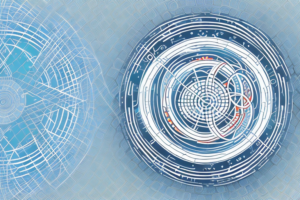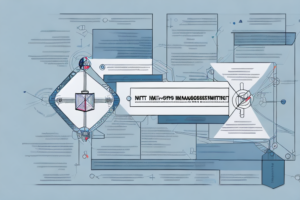What is security impact analysis in RMF?
7 min read
A computer system with a security shield protecting it
In the world of cybersecurity, the Risk Management Framework (RMF) is a critical component in ensuring that organizations are able to effectively manage and mitigate risk. At the heart of the RMF process is security impact analysis, or SIA. But what exactly is SIA, and why is it so important in RMF?
Understanding the Risk Management Framework (RMF) in Cybersecurity
In order to fully understand SIA and its role in RMF, it’s important to first have a solid grasp on what the RMF process entails. In short, RMF is a set of guidelines and best practices that organizations can use to manage and mitigate risk in their information systems. It involves a cyclical process of assessing, monitoring, and responding to risks, all with the ultimate goal of ensuring the confidentiality, availability, and integrity of valuable data.
The RMF process is broken down into a series of steps, which can vary depending on the specific organization and its needs. These steps include:
- Categorizing information systems and the information they store
- Selecting and implementing security controls
- Assessing the effectiveness of those controls
- Authorizing the system to operate
- Continuously monitoring for new risks or changes to the system
One of the key benefits of using the RMF process is that it provides a standardized approach to risk management across an organization. This can help ensure that all systems and data are being protected in a consistent and effective manner. Additionally, the RMF process can help organizations identify and prioritize risks, allowing them to allocate resources more efficiently and effectively.
However, it’s important to note that the RMF process is not a one-size-fits-all solution. Each organization will need to tailor the process to their specific needs and requirements. This may involve modifying the steps of the process, selecting different security controls, or implementing additional measures to address unique risks.
The Importance of Conducting Security Impact Analysis in RMF
So where does security impact analysis fit into this process? Simply put, SIA is the step in which an organization assesses how any changes or new risks will affect the operation and security of their information system. The goal of SIA is to identify any potential negative impacts on the system’s confidentiality, availability, or integrity, and determine how those impacts can be mitigated or minimized.
There are a number of reasons why SIA is such a critical part of the RMF process. For one, it helps organizations to proactively identify and address potential security threats before they become a major issue. By conducting SIA regularly and thoroughly, organizations can ensure that their systems remain secure and effective, even as new threats emerge.
Additionally, SIA can help organizations to better understand their overall risk posture, and identify areas where resources may need to be allocated in order to further improve security. By regularly conducting SIA, organizations can remain vigilant and proactive in their approach to managing information system risks.
Another important reason why SIA is critical in the RMF process is that it helps organizations to comply with regulatory requirements. Many industries, such as healthcare and finance, are subject to strict regulations regarding the security of their information systems. By conducting SIA, organizations can demonstrate to regulators that they are taking proactive steps to identify and mitigate potential security risks.
Finally, SIA can also help organizations to save time and money in the long run. By identifying potential security risks early on, organizations can avoid costly security breaches and downtime. Additionally, by regularly conducting SIA, organizations can ensure that their security measures are up-to-date and effective, reducing the need for costly and time-consuming security updates in the future.
The Process of Conducting a Security Impact Analysis in RMF
So what does the SIA process actually entail? At a high level, it involves a series of steps that organizations can follow in order to thoroughly assess the potential impacts of any changes or new risks on their information systems. Those steps may include:
- Identifying the change or new risk that needs to be assessed
- Determining the potential impact of that change or risk on confidentiality, availability, and integrity
- Evaluating existing security controls and determining whether they are sufficient to address the new risk
- Identifying any new controls that may need to be implemented in order to mitigate the impact of the risk
- Re-assessing the overall risk posture of the information system in light of the new risk or change
Overall, the SIA process is a critical step in ensuring that organizations are able to manage risk effectively and address potential threats before they become major issues.
One important aspect of the SIA process is the involvement of key stakeholders from across the organization. This may include representatives from IT, security, legal, and business units, among others. By involving a diverse group of stakeholders, organizations can ensure that all potential impacts of a change or new risk are thoroughly considered and addressed.
Another key component of the SIA process is ongoing monitoring and reassessment. Risks and threats to information systems are constantly evolving, and it is important for organizations to regularly review and update their SIA processes in order to stay ahead of potential issues. By regularly conducting SIAs and making necessary updates to security controls, organizations can better protect their information systems and minimize the impact of any potential security incidents.
Benefits of Performing a Security Impact Analysis in RMF
The benefits of conducting SIA on a regular basis are clear. For one, it helps organizations proactively manage risk, ensuring that they are able to address potential threats before they become major issues. Additionally, SIA can help organizations to better understand their overall risk posture, and identify areas where additional resources may be needed in order to further improve security.
Another benefit of conducting SIA is that it allows organizations to remain in compliance with a variety of regulatory requirements. Many regulations, such as the Federal Information Security Management Act (FISMA), require organizations to conduct SIA as part of their overall RMF process.
Key Factors to Consider When Conducting a Security Impact Analysis in RMF
While the SIA process may seem straightforward, there are a number of key factors that organizations should keep in mind when conducting this type of analysis. Some of those factors may include:
- Thoroughly assessing the impact of any changes or new risks on confidentiality, availability, and integrity
- Determining whether existing security controls are sufficient to address the new risk, and identifying any new controls that may be needed
- Re-assessing the overall risk posture of the information system in light of the new risk or change
- Ensuring compliance with any regulatory or legal requirements related to SIA
Common Challenges Faced During Security Impact Analysis in RMF and How to Overcome Them
Like any process, conducting SIA can sometimes present unique challenges. Some common challenges include:
- Difficulty in identifying potential impacts on confidentiality, availability, and integrity
- Limited resources for implementing new security controls
- Difficulty in ensuring full compliance with regulatory requirements
To overcome these challenges, organizations may need to invest in additional resources, such as personnel or technology, in order to conduct thorough SIA. Additionally, organizations may need to partner with outside experts who can provide guidance and support throughout the SIA process.
Best Practices for Conducting a Comprehensive Security Impact Analysis in RMF
To ensure the most effective SIA process possible, organizations may want to consider following some best practices, such as:
- Thoroughly documenting all stages of the SIA process
- Partnering with outside experts or consultants when necessary
- Conducting regular SIA assessments, rather than waiting for major changes or new risks to occur
- Ensuring that all stakeholders are involved and informed throughout the SIA process
Tools and Techniques Used for Security Impact Analysis in RMF
There are a variety of tools and techniques that organizations can use in order to conduct effective SIA in the RMF process. Some of those tools and techniques may include:
- Risk assessment methodologies, such as those outlined in NIST Special Publication 800-30
- Vulnerability scanning and management tools
- Penetration testing and ethical hacking
- Threat modeling and scenario planning
By using these tools and techniques in conjunction with the SIA process, organizations can ensure that they are thoroughly assessing potential impacts and mitigating any potential risks to their information systems.
Real-Life Examples of Successful Security Impact Analysis Implementation in RMF
Finally, it can be helpful to examine real-life examples of successful SIA implementation in the RMF process. Some examples of organizations that have effectively used SIA to manage risk include:
- The National Aeronautics and Space Administration (NASA), which has used SIA to effectively manage risk across numerous complex information systems
- The United States Department of Agriculture (USDA), which has implemented a comprehensive SIA process in order to ensure the security and integrity of its food safety systems
- The National Institute of Standards and Technology (NIST), which has developed a variety of standards and guidelines related to SIA and the RMF process
By examining these examples and learning from their successes, organizations can better position themselves to effectively manage risk and ensure the security of their information systems.



